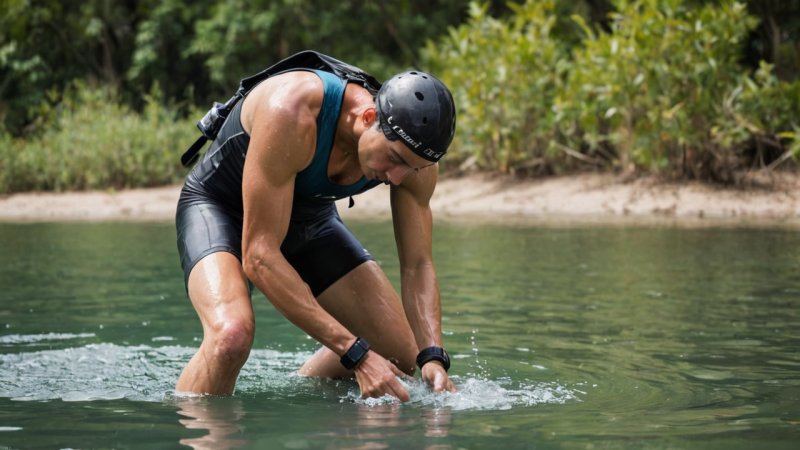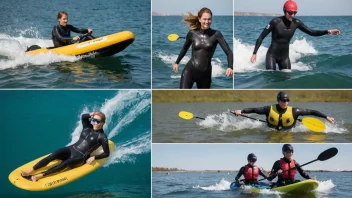Dehydration is a critical concern for athletes engaged in water sports, despite the paradox of being surrounded by water. Understanding the signs of dehydration can mean the difference between enjoying a fun day on the water and facing serious health risks. This article explores the physiological effects of dehydration, the unique challenges posed by water sports, and practical tips for athletes to recognize and mitigate these risks effectively.
Understanding Dehydration
Dehydration occurs when the body loses more fluids than it takes in. This imbalance can impair physical performance, cognitive function, and overall health. While the body can tolerate some degree of fluid loss, significant dehydration can lead to severe complications. Athletes engaged in high-intensity or prolonged activities are particularly susceptible to dehydration, as they may not recognize the signs due to the cooling effects of water.
Physiological Effects of Dehydration
When dehydrated, several physiological responses occur:
- Reduced Blood Volume: Dehydration lowers blood volume, which can result in decreased cardiac output and reduced oxygen delivery to muscles.
- Increased Core Temperature: Dehydration hampers the body's ability to regulate temperature, increasing the risk of heat-related illnesses.
- Cognitive Impairment: Fluid loss can affect mental clarity, leading to poor decision-making and decreased focus.
- Muscle Cramps and Fatigue: Electrolyte imbalances caused by dehydration can lead to muscle cramps, fatigue, and decreased performance.
Signs of Dehydration
Recognizing the signs of dehydration is crucial for water sport athletes. Symptoms can vary from mild to severe and may include:
Mild to Moderate Dehydration
- Thirst: An obvious but often overlooked indicator.
- Dry Mouth and Throat: A lack of saliva can lead to discomfort.
- Dark Yellow Urine: Ideally, urine should be pale yellow. Dark urine is a sign of concentrated waste.
- Fatigue: A sudden drop in energy levels can signal dehydration.
Severe Dehydration
- Confusion or Dizziness: Cognitive impairment can manifest as confusion or dizziness.
- Rapid Heart Rate: The heart may race to compensate for reduced blood volume.
- Sunken Eyes: A noticeable sign of severe dehydration.
- Low Blood Pressure: This can lead to fainting or shock.
Challenges Faced in Water Sports
Water sports present unique challenges regarding hydration:
Environmental Factors
Heat and humidity levels can significantly impact hydration needs. Even in water, athletes can sweat profusely, losing fluids without realizing it.
Physical Activity
High-intensity activities like surfing, rowing, or water skiing require significant energy and fluid consumption. The more vigorous the activity, the greater the risk of dehydration.
Perception of Thirst
Water sports athletes may not perceive thirst as a critical signal due to being in a water environment. This can lead to neglecting fluid intake.
Preventing Dehydration in Water Sports
Prevention is always better than cure. Here are some strategies to stay hydrated:
Hydration Strategies
- Pre-Hydration: Drink water before starting your activity. Aim for 16-20 ounces at least two hours prior.
- Regular Hydration: Establish a routine for fluid intake during activities. Aim for 7-10 ounces every 10-20 minutes, depending on intensity.
- Electrolyte Balance: Consider electrolyte-enhanced beverages, especially during prolonged activities or in hot conditions.
Monitoring Techniques
Utilizing technology can help monitor hydration levels:
- Wearable Devices: Many fitness trackers now include hydration tracking features.
- Urine Color Charts: Keep a chart handy to evaluate urine color regularly.
- Hydration Apps: Use mobile apps designed to remind you to drink water and track fluid intake.
Conclusion
Recognizing the signs of dehydration is crucial for athletes involved in water sports. Awareness of the physiological effects, challenges faced, and practical prevention strategies can empower athletes to stay safe and perform at their best. Hydration should be a priority, not an afterthought. By implementing effective hydration strategies and utilizing technology to monitor fluid intake, athletes can ensure they enjoy their time on the water while maintaining optimal performance and safety.






